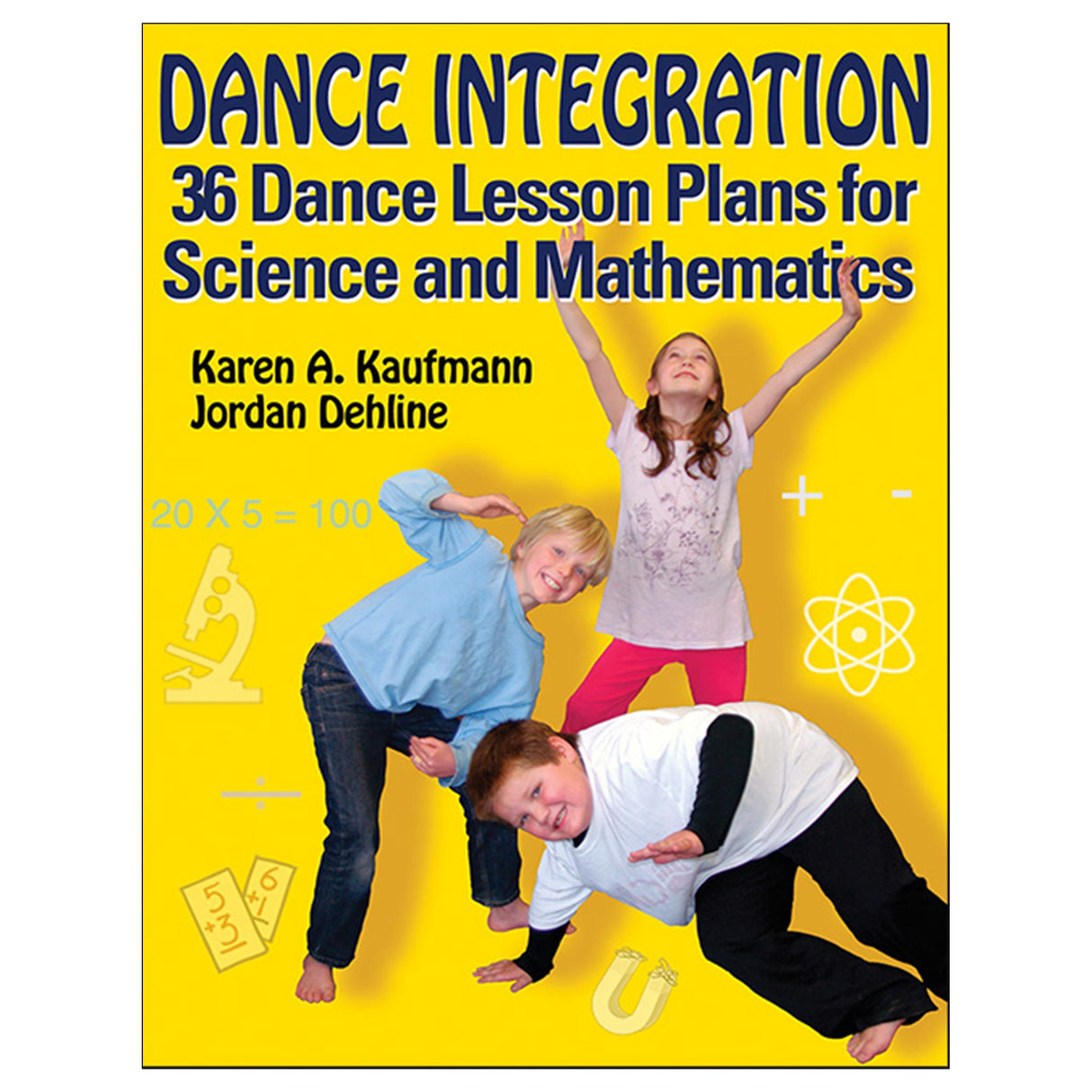Dance Integration
36 Dance Lesson Plans for Science and Mathematics
Author: Karen A. Kaufmann, Jordan Dehline
$58.95 CAD
Do you want to . . .
• create a rich and vibrant classroom environment?
• stimulate your students’ minds in multiple ways?
• transform your teaching through incorporating the arts in your mathematics and science curriculums?
Then Dance Integration: 36 Dance Lesson Plans for Science and Mathematics is just the book for you!
The dance lesson plans in this groundbreaking book infuse creativity in mathematics and science content. Students will gain a wealth of critical knowledge, deepen their critical-thinking skills, and learn to collaborate and communicate effectively.
Written for K-5 teachers who are looking for creative ways to teach the standards, Dance Integration will help you bring your mathematics and science content to life as you guide your students to create original choreography in mathematics and science and perform it for one another. In doing so, you will help spark new ideas for your students out of those two curriculums —no more same-old same-old!
And in the freshness of these new ideas, students will increase comfort in performing in front of one another and discussing performances while deepening their understanding of the core content through their kinesthetic experiences. The creative-thinking skills that you will teach through these lesson plans and the innovative learning that dance provides are what set this book apart from all others in the field.
Dance Integration was extensively field-tested by authors Karen Kaufmann and Jordan Dehline. The book contains these features:
• Instructions on developing modules integrating mathematics and science
• Ready-to-use lesson plans that classroom teachers, physical education teachers, dance educators, and dance specialists can use in teaching integrated content in mathematics and science
• Tried-and-true methods for connecting to 21st-century learning standards and integrating dance into K-5 curriculums
This book, which will help you assess learning equally in dance, science, and mathematics, is organized in three parts:
• Part I introduces the role of dance in education; defines dance integration; and describes the uses, benefits, and effects of dance when used in tandem with another content area.
• Part II offers dance and mathematics lessons that parallel the common core standards for mathematics.
• Part III presents dance and science learning activities in physical science, life science, earth and space sciences, investigation, experimentation, and technology.
Each lesson plan includes a warm-up, a developmental progression of activities, and formative and summative assessments and reflections. The progressions help students explore, experiment, create, and perform their understanding of the content. The plans are written in a conversational narrative and include additional notes for teachers. Each lesson explores an essential question relevant to the discipline and may be taught in sequence or as a stand-alone lesson.
Yes, Dance Integration will help you meet important standards:
• Common Core State Standards for Mathematics
• Next Generation Sciencce Standards
• Standards for Learning and Teaching Dance in the Arts
More important, this book provides you with a personal aesthetic realm in your classroom that is not part of any other school experience. It will help you bring joy and excitement into your classroom. And it will help you awaken a community of active and eager learners.
Isn’t that what education is all about?
Audience
Resource for dance educators, physical educators, classroom teachers, and dance specialists. Reference for educators using dance integration to teach math and science in elementary education.
Part I. The Role of Dance in Education
Chapter 1. Introduction to Dance Integration
Rethinking Education
What Is Dance Integration?
Dance and Academic Achievement
Other Benefits of Dance Integration
Summary
References
Chapter 2. Teaching Dance Integration: Finding Relationships
Foundations: Dance, Mathematics, and Science
Organization of Dance Integration Activities
Making New Connections: Designing Your Own Integrated Lessons
Evidence of Learning
Summary
References
Chapter 3. Pedagogy: Enlivening the Classroom
Transforming the Classroom Into the Dance Studio
Transitioning to the Dance Class
Teaching Tools
Dance Making and Choreography
Sharing With Parents
Adapting for Special Populations
Summary
References
Part II. Dance and Mathematics Learning Activities
Chapter 4. Counting and Cardinality
Counting
Whole Numbers, More, and Less
Ordinal Numbers
Chapter 5. Operations and Algebraic Thinking
Addition
Subtraction
Multiplication and Division
Chapter 6. Numbers and Operations
Place Value
Fractions
Chapter 7. Measurement and Data
Pennies, Nickels, and Dimes
Time
Measurement
Perimeter and Area
Bar Graphs
Chapter 8. Geometry
Two-Dimensional Shapes
Three-Dimensional Shapes
Symmetry and Asymmetry
Angles and Lines
Part III. Dance and Science Learning Activities
Chapter 9. Physical Science
Magnets
Balance and Force
Atoms and Molecules
States of Water
Chapter 10. Life Science
Vertebrate Classification
Butterfly Life Cycle
Frog Life Cycle
Plant Life Cycle
Five Senses
Bones
Chapter 11. Earth and Space Sciences
Weather
Constellations
Moon Phases
Water Cycle
Erosion and Weathering
Igneous, Sedimentary, and Metamorphic Rocks
Chapter 12. Investigation, Experimentation, and Technology
Investigation, Experimentation, and Problem Solving
Dance Viewing Through Technology
Dance and Photography





